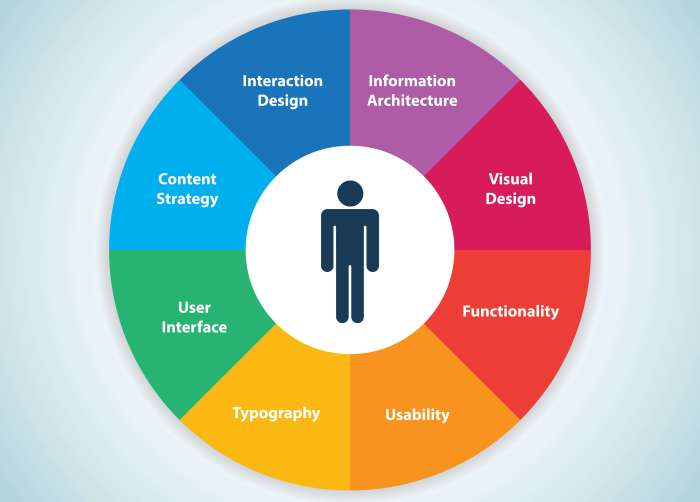Developing Content for User Experience takes center stage, inviting readers into a world where design meets functionality with flair. Get ready to dive into the art of creating captivating online experiences that keep users coming back for more.
In this digital age, user experience is key to the success of any website. It’s not just about what you see, but how you feel navigating through a site.
Importance of User Experience in Content Development

User experience (UX) plays a crucial role in content development as it directly impacts how users interact with a website or digital platform. A good user experience can enhance engagement, increase retention rates, and ultimately drive conversions. By focusing on creating a seamless and intuitive user experience, content developers can ensure that visitors have a positive interaction with the brand, resulting in increased brand loyalty and customer satisfaction.
Impact on Website Engagement and Retention
A well-designed user experience can significantly impact website engagement and retention. For example, a website that is easy to navigate, loads quickly, and provides relevant and valuable content will likely keep visitors on the site for longer periods. This increased engagement can lead to higher conversion rates and better overall performance metrics. On the other hand, a poor user experience, such as slow loading times, confusing navigation, or irrelevant content, can drive users away and result in high bounce rates.
Relationship between User Experience and Brand Perception, Developing Content for User Experience
The user experience also plays a critical role in shaping brand perception. When users have a positive experience interacting with a website or digital platform, they are more likely to view the brand in a favorable light. On the contrary, a frustrating or confusing user experience can damage the brand’s reputation and lead to negative perceptions among users. By prioritizing user experience in content development, brands can build trust, credibility, and loyalty among their target audience.
Understanding User Behavior: Developing Content For User Experience

When it comes to understanding user behavior, there are key factors to keep in mind. By analyzing user behavior, we can gain valuable insights that can inform our content creation decisions.
Key Factors to Consider
- Demographics: Understanding the age, gender, location, and interests of your target audience can help tailor content to their preferences.
- Psychographics: Delving into the attitudes, values, and lifestyle choices of users can provide a deeper understanding of what resonates with them.
- User Goals: Identifying the goals and motivations of users when interacting with your content can help create more engaging and relevant experiences.
Methods for Conducting User Research
- Surveys: Gathering feedback through surveys can help collect quantitative data on user preferences.
- Interviews: Conducting one-on-one interviews allows for in-depth conversations to uncover user insights.
- Usability Testing: Observing how users interact with your content in real-time can reveal pain points and areas for improvement.
How User Behavior Insights Inform Content Creation
By understanding user behavior, we can create content that is tailored to meet the needs and preferences of our audience, leading to higher engagement and satisfaction.
- Personalization: Using insights from user behavior, we can personalize content to enhance the overall user experience.
- Content Optimization: Analyzing user behavior can help optimize content structure, format, and delivery to maximize impact.
- Data-Driven Decisions: Making content creation decisions based on user behavior data ensures a more targeted and effective approach.
Designing Content for User Experience
Creating content for a seamless user experience involves ensuring that the information is easily accessible, engaging, and valuable to the audience. By designing content with the user in mind, you can enhance their overall experience and encourage them to stay longer on your platform.
Tips for Creating User-Friendly Content
- Keep the content concise and to the point to avoid overwhelming the user.
- Use clear headings, subheadings, and bullet points to organize information effectively.
- Incorporate visuals such as images, videos, and infographics to make the content more engaging.
- Ensure that the content is easy to scan and read on different devices by using proper formatting and typography.
Importance of Responsive Design
Responsive design plays a crucial role in enhancing user experience by ensuring that the content adapts seamlessly to various screen sizes and devices. This means that users can access the content on their smartphones, tablets, or desktops without any distortion or loss of information. By implementing responsive design, you can reach a wider audience and provide a consistent experience across all platforms.
Accessibility and Inclusivity in Content Development
Creating accessible content is crucial to ensure that all users, regardless of their abilities or disabilities, can access and engage with the content. It is essential to prioritize inclusivity in content development to provide a seamless user experience for everyone.
Importance of Accessibility
Accessibility in content development involves making sure that all users, including those with disabilities, can perceive, understand, navigate, and interact with the content effectively. By incorporating accessibility features, content creators can reach a wider audience and demonstrate a commitment to inclusivity.
- Use alt text for images to provide descriptions for visually impaired users who rely on screen readers.
- Ensure proper heading structure to assist users in navigating content easily, especially for those using assistive technologies.
- Provide captions and transcripts for multimedia content to accommodate users who are deaf or hard of hearing.
- Implement color contrast to make text readable for users with visual impairments.
Examples of Accessibility Features
Accessibility features not only benefit users with disabilities but also enhance the overall user experience for all individuals interacting with the content.
- Text-to-Speech Technology: Enables users with visual impairments to listen to the content instead of reading it.
- Keyboard Navigation: Allows users who cannot use a mouse to navigate the website using only the keyboard.
- Alternative Text for Images: Descriptive alt text helps all users understand the context of images, including those who cannot see them.